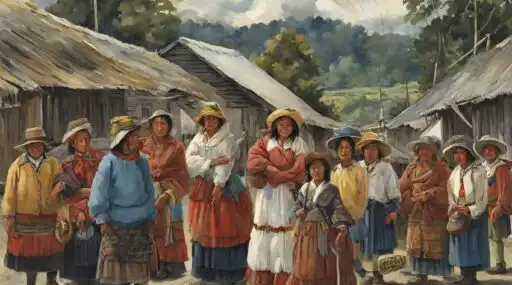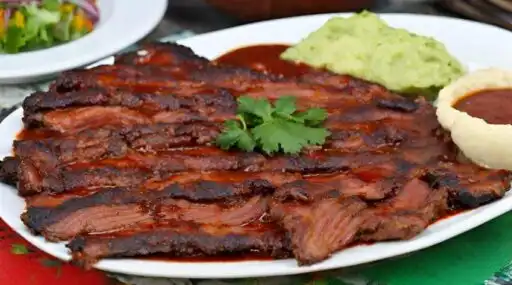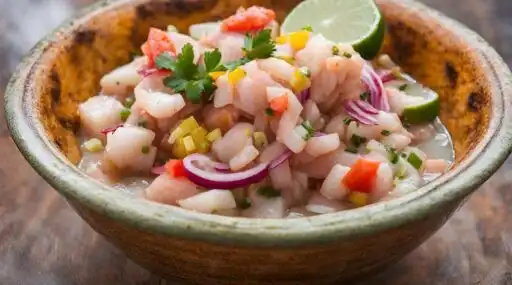Saice recipe, within the rich tapestry of Bolivian gastronomy, Saice emerges as a culinary masterpiece that weaves together the diverse flavors and cultural influences of the country. This hearty stew, rooted in tradition and indigenous ingredients, symbolizes Bolivia’s vibrant culinary heritage. Join us on a flavorful journey as we explore the recipe for Saice, unraveling the essential ingredients, the meticulous preparation, and the cultural significance that make it a cherished gem in Bolivia’s culinary crown.
Understanding Saice: A Journey into Bolivian Culinary Heritage:
Saice embodies Bolivia’s cultural fusion, reflecting the convergence of native traditions and Spanish influences. This savory stew, known for its robust flavors and aromatic spices, showcases the bounty of the country’s agricultural landscape. The use of native ingredients like chuño (freeze-dried potatoes) and the incorporation of aromatic spices exemplify Bolivia’s commitment to preserving its culinary heritage.
Ingredients for Bolivian Saice:
The beauty of Saice lies in its combination of local and flavorful ingredients. Let’s delve into the components that create this harmonious Bolivian stew.
- Meat:
- Beef or Lamb: 1 pound of beef or lamb, cut into bite-sized pieces. The choice of meat contributes to the stew’s hearty flavor.
- Chuño:
- Chuño: 1 cup of chuño, a freeze-dried potato product. Soaked and rehydrated before use, chuño adds a unique texture and heartiness to the stew.
- Vegetables:
- Carrots: 2 medium-sized carrots, peeled and sliced. Carrots add sweetness and color to the dish.
- Potatoes: 2 medium-sized potatoes, peeled and diced. Alongside chuño, potatoes contribute to the stew’s substantial consistency.
- Green Beans: 1 cup of fresh green beans, trimmed and chopped. Green beans provide a crisp texture and vibrant color.
- Peas: 1/2 cup of fresh or frozen peas, introducing a touch of sweetness.
- Aromatics:
- Onions: 1 large onion, finely chopped. Onions serve as the aromatic base of the stew.
- Garlic: 3 cloves of garlic, minced. Garlic adds depth and savory notes to the flavor profile.
- Spices and Herbs:
- Cumin: 1 teaspoon of ground cumin. Cumin infuses warmth and earthiness into the stew.
- Paprika: 1 teaspoon of paprika. Paprika contributes a smoky and slightly sweet undertone.
- Oregano: 1 teaspoon of dried oregano. Oregano adds a herbaceous note, enhancing the overall aroma.
- Tomato Base:
- Tomatoes: 3 medium-sized tomatoes, diced. Fresh tomatoes create a robust base for the stew.
- Broth:
- Beef or Vegetable Broth: 4 cups of broth, enriching the stew with flavor.
- Oil:
- Vegetable Oil: 2 tablespoons, for sautéing the onions and garlic.
Preparation: Crafting the Perfect Bolivian Saice:
Creating the perfect Saice involves a thoughtful combination of spices, native ingredients, and a slow simmering process. Let’s explore the step-by-step process to achieve a bowl of Saice that embodies the essence of Bolivian culinary heritage.
Step 1: Preparing Chuño:
- Soak Chuño: Start by soaking the chuño in cold water for several hours or overnight. This process rehydrates the freeze-dried potatoes, making them ready for use in the stew.
- Drain and Rinse: Once soaked, drain and rinse the chuño thoroughly. Set aside for later use.
Step 2: Sautéing Aromatics:
- Heat Oil: In a large pot, heat vegetable oil over medium heat. Add finely chopped onions and minced garlic.
- Sauté until Fragrant: Sauté the onions and garlic until they become translucent and aromatic, creating a flavorful foundation for the stew.
Step 3: Browning the Meat:
- Add Meat: Introduce the bite-sized pieces of beef or lamb to the pot. Brown the meat on all sides to enhance its savory richness.
- Season with Spices: Sprinkle ground cumin, paprika, and dried oregano over the meat. Season with salt and pepper to taste, ensuring the spices coat the meat evenly.
Step 4: Building the Saice:
- Add Vegetables: Incorporate the sliced carrots, diced potatoes, chopped green beans, and peas into the pot. Stir well to blend the ingredients.
- Introduce Tomatoes: Add the diced tomatoes to the pot, creating a luscious base for the stew. Stir to combine and let the tomatoes release their juices.
- Pour in Broth: Pour the beef or vegetable broth into the pot, covering the ingredients. The broth forms the flavorful essence of the Saice.
Step 5: Simmering and Infusing Flavors:
- Bring to a Boil: Increase the heat and bring the stew to a gentle boil. Once boiling, reduce the heat to a simmer.
- Cover and Cook: Cover the pot and let the Saice simmer on low heat for approximately 45 minutes to an hour. This slow simmer allows the flavors to meld, and the meat and vegetables to become tender.
Step 6: Adding Chuño and Final Touches:
- Incorporate Chuño: Uncover the pot and add the rehydrated chuño to the stew. Stir gently to ensure even distribution.
- Adjust Seasoning: Taste the Saice and adjust the seasoning if needed. This is the final opportunity to add salt, pepper, or any additional spices to achieve the desired flavor profile.
Step 7: Serving Bolivian Saice:
- Remove Bay Leaves: Before serving, remember to remove any bay leaves from the stew.
- Serve Warm: Ladle the Saice into bowls and serve it warm, allowing the rich aroma to captivate your senses.
- Garnish (Optional): For a finishing touch, garnish the Saice with fresh herbs like chopped parsley or cilantro, adding a burst of color and freshness.
Tips for Perfect Bolivian Saice:
- Chuño Preparation:
- Soaking Time: Allow ample time for the chuño to soak and rehydrate thoroughly before incorporating it into the stew.
- Spice Balance:
- Adjust to Taste: Bolivian cuisine often welcomes personal adjustments to spice levels. Taste the Saice throughout the cooking process and adjust the spices accordingly.
- Simmering Technique:
- Low and Slow: The slow simmering process is crucial for allowing the meat and vegetables to become tender and infusing the Saice with rich flavors.
- Vegetable Variations:
- Seasonal Choices: Saice is versatile, so feel free to incorporate seasonal vegetables for a personalized touch.
- Fresh Ingredients:
- Tomatoes and Herbs: Using fresh, ripe tomatoes and herbs enhances the overall freshness and flavor of the Saice.
Conclusion: Savoring Bolivian Culinary Tradition:
In conclusion, Saice stands as a testament to Bolivia’s commitment to preserving its culinary heritage—a dish that encapsulates the country’s diverse flavors and cultural influences. From the rehydrated chuño to the aromatic blend of spices and the slow-simmered meat and vegetables, each element contributes to the symphony of flavors that defines Bolivian Saice.
As you embark on your own culinary journey to create Saice, savor the warmth, depth, and cultural richness that this stew brings to the table. Whether shared among family or friends, Saice invites you to experience the heart of Bolivian cuisine—one hearty and flavorful spoonful at a time. So, gather your ingredients, let the aromas fill your kitchen, and relish in the culinary tradition of Bolivian Saice—a dish that resonates with the soul of a nation.






































Leave a Reply